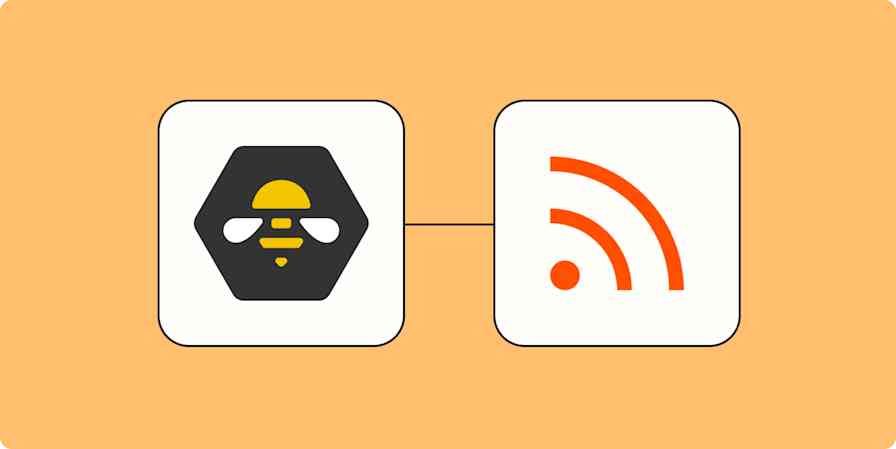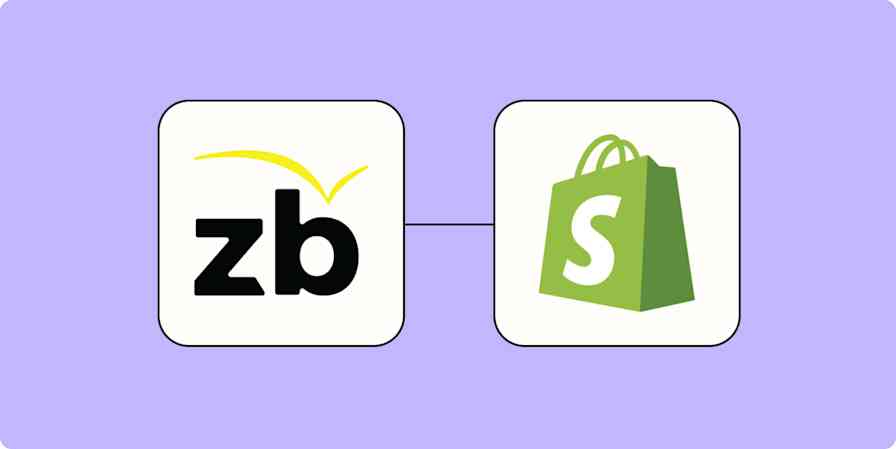Like a lot of folks stuck inside right now, my partner and I have been playing a lot more Mario Kart than usual.
On its face, the game seems like the perfect pastime for two people who are stuck inside for an indefinite amount of time: it has bright colors, cheery music, and you zoom around cute little tracks while throwing turtle shells at each other. A great way to pass the time and absolutely no one will get mad at anyone.
Provided both people have a chance to win.
This is not a post about how good I am at Mario Kart. Suffice it to say that for the sake of our relationship, my partner's controller is currently on the shelf, gathering dust.
Luckily, this led me to my new competitive obsession: time trials. Races where there are no other competitors except for the "ghost" of your previous best time. The mode's entire purpose, I'm convinced, is so you can watch yourself get lapped by a spectral reminder that on Thursday of last week, you remembered how to drift properly. One day, I tell myself, I'm gonna wipe that smug grin off of Luigi's face. I just have to remember how to get around that corner…
Between practice laps, the experience has also prompted me to evaluate how I stay motivated at work. I find myself repeatedly asking things like, "What day is it?" or, "What am I supposed to be doing now?" and seriously considering tattooing my to-do list on myself, Memento style.
Normally, my daily motivation would come from opening up our ticketing software, Help Scout, and navigating to the Reports section, which gives me a nice big overview of where the team's at in all of our usual metrics. I could see where I was in comparison to my peers, and set some goals for how much I had to get done each day. Lately, though, that strategy's done more harm than good. When I open up the giant chart, review its many colorful graphs and find my name in the list, all I can think is, "I'm never going to get this much work done. And even if I could get that much work done... what difference would it make? Look at all these people who are doing their jobs better than me."
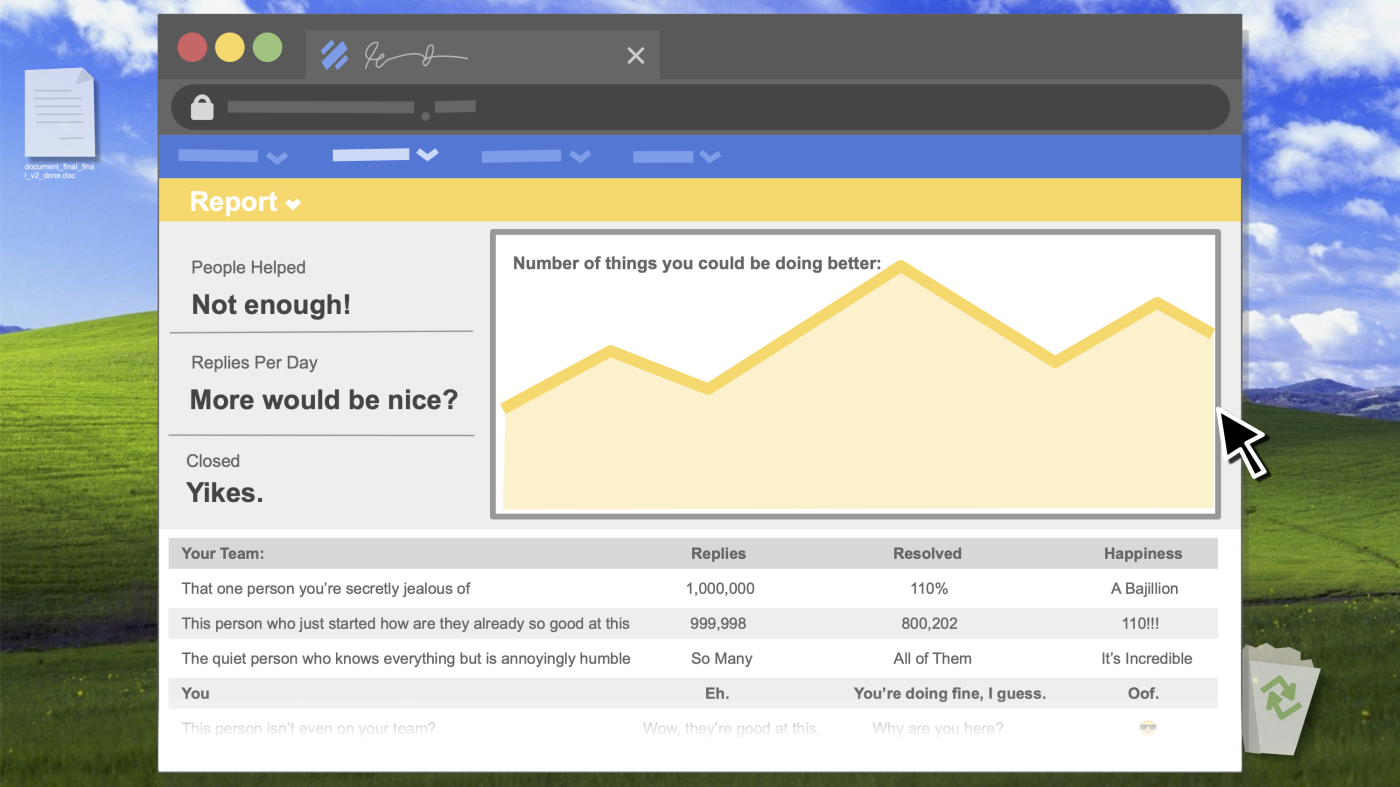
The sheer amount of data has become overwhelming, and now my previous method for getting motivated at the start of the day is achieving the opposite: It makes me want to go back to bed, and maybe never write another email ever again.
To keep myself productive, I need to apply the same approach that I've adopted in Mario Kart: Competing against myself.
This article describes how to set up several multi-step Zaps—our name for the automated workflows you create with Zapier. You'll need a Zapier account if you don't already have one—it's free to sign up. Want to see how it works? Check out our demo.
How to turn your past self into a Zap
Start with Schedule by Zapier as the trigger, setting the regularity you prefer. For myself, I chose Daily, so that I could track the number of support tickets I reply to each day:

Then, we're going to perform a search that gets yesterday's numbers. Help Scout has a pretty robust Get Custom Report action for this. With other apps, you may need to create a custom search to get something similar:
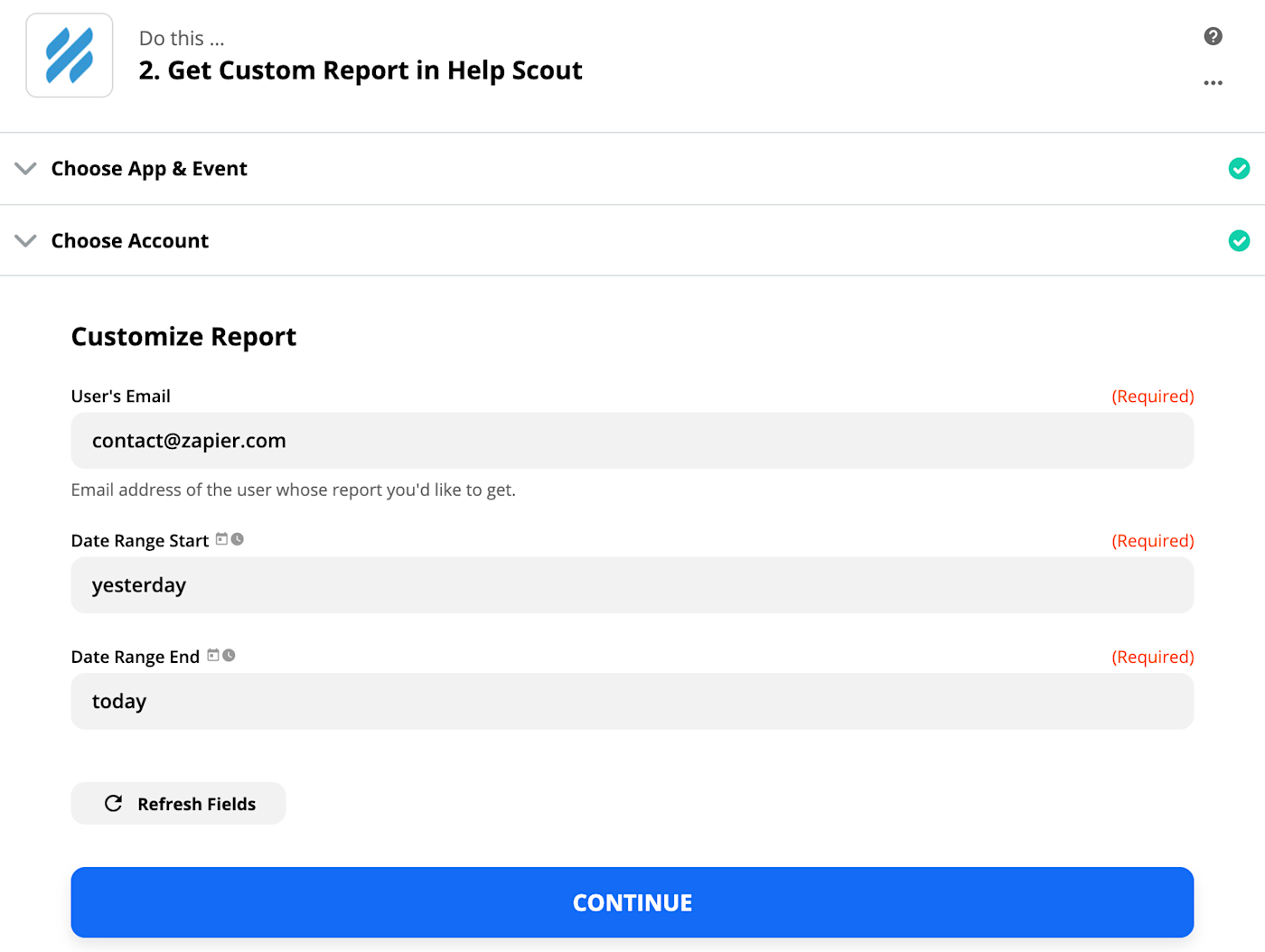
Finally, we're going to use a Slack action to send that number directly to me, so that I can see exactly what I'm competing against at the start of each day, using only the stats that I select:
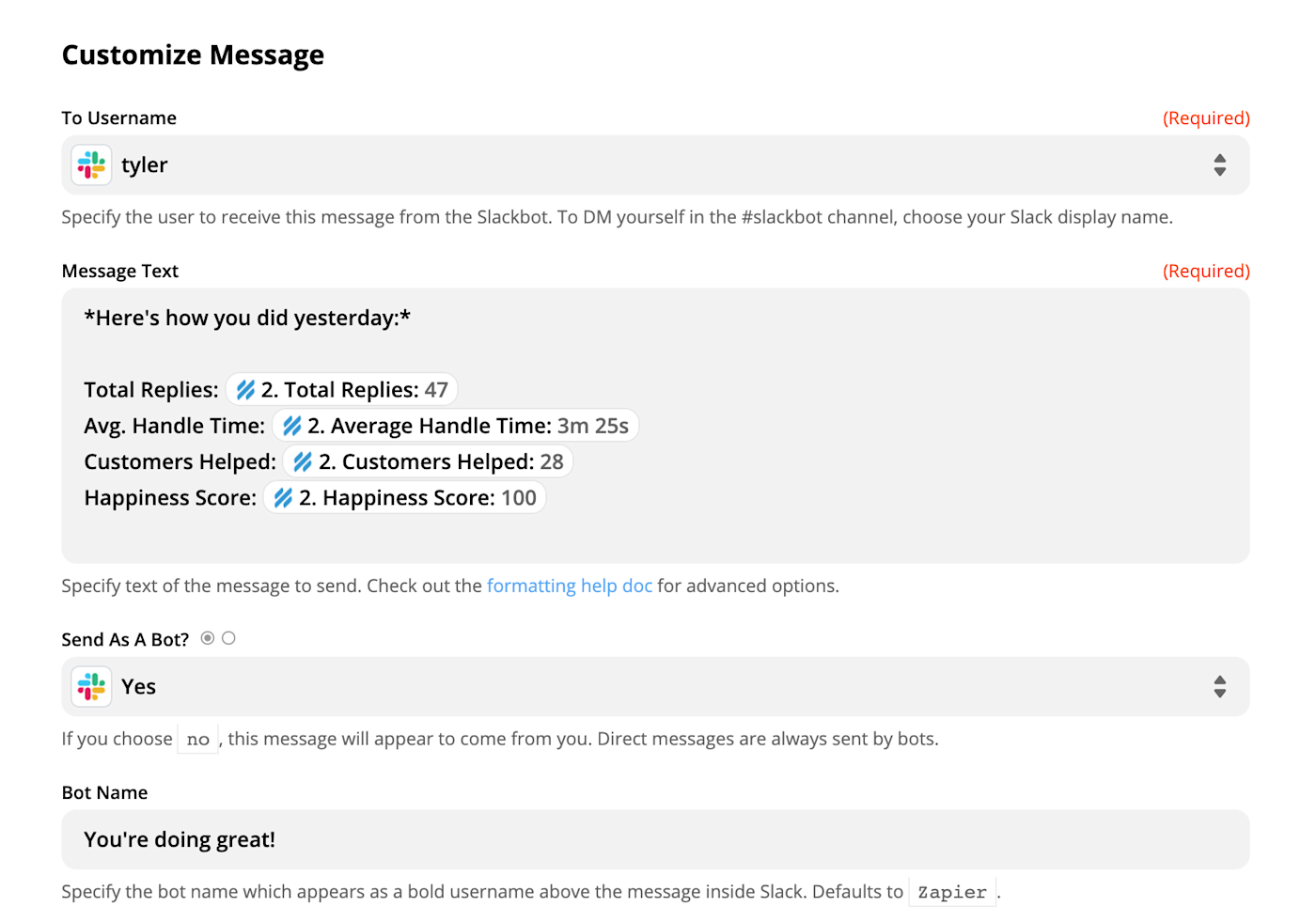
Now instead of starting my day with this:

I log in to this:

Other uses
By changing up the "Search" action in Step 2, we can apply this to lots of different apps and use cases, such as:
Tracking how many subscribers clicked on your Mailchimp campaign with "Find Campaign"
Seeing how many rows in a Google Sheet have my name on them with "Get Many Spreadsheet Rows"
Check the details of a deal with HubSpot’s "Find Deal" search action
Use Storage by Zapier to keep track of your personal bests
Once you get in the habit of competing against your previous performance, let's say you want to kick it up a notch, and compete against the best version of yourself.
Using Storage by Zapier, we can keep track of your personal best performance, and keep it as the benchmark that we're competing against.
To store our best numbers, take the Zap we just created, and add the Storage by Zapier "Get Value" action here:
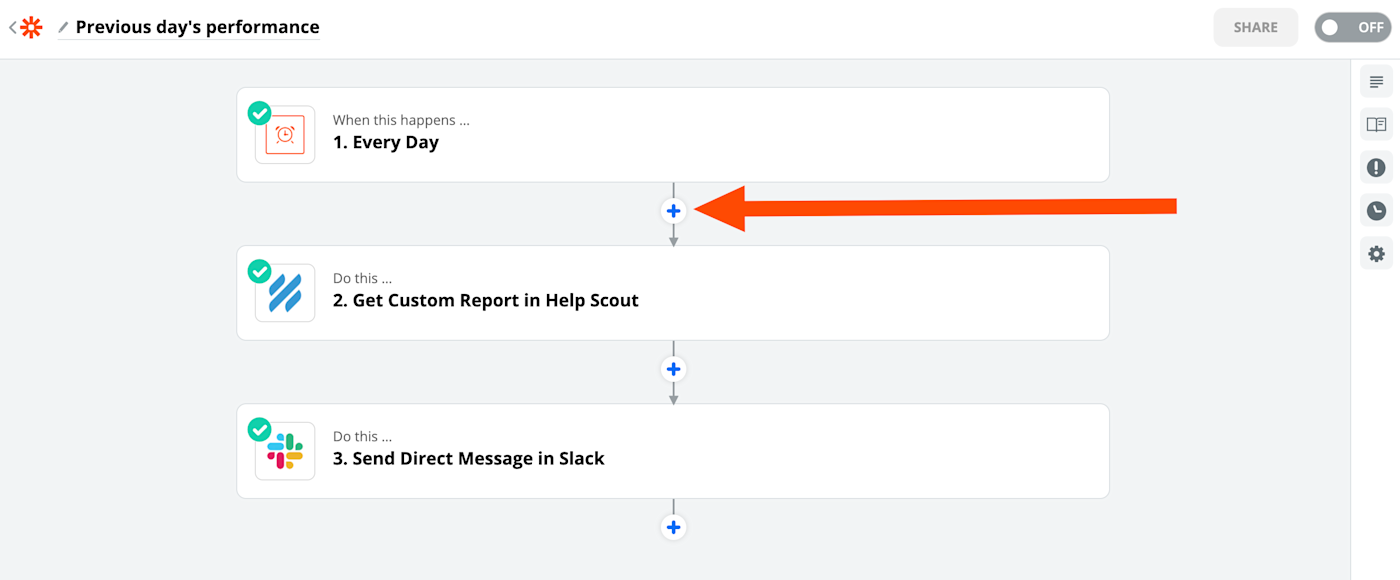
We can call the value anything you want, but for now let's name it "PersonalBest", and have the action create that value if it doesn't exist yet. For now, let's give it a value of 0:
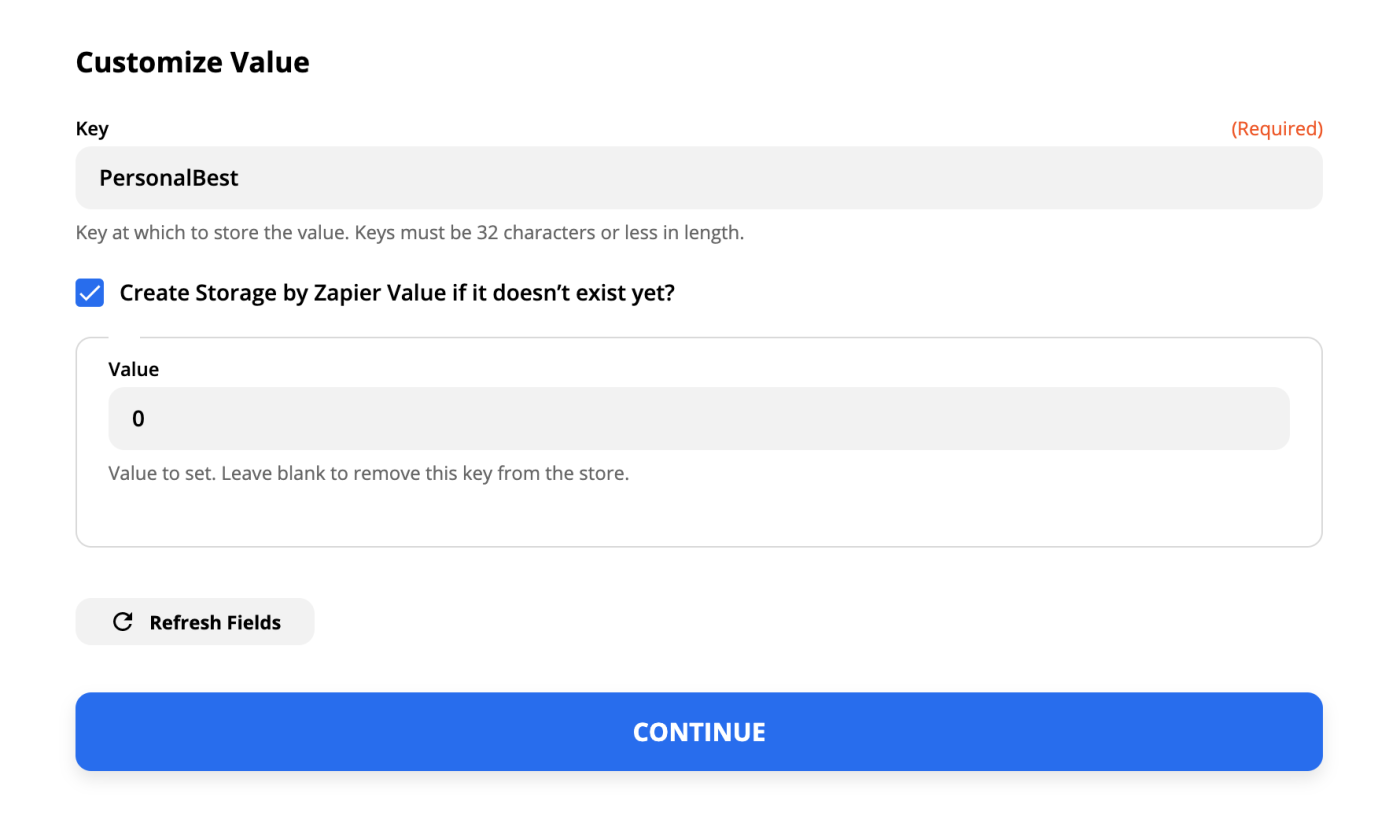
After we've sent the Slack message to ourselves with today's goals, we can use some math to check and see if we did better yesterday than the day before, with the Formatter "Perform Math Operation" action.
To do this, select Formatter > Numbers > Perform Math Operation > Subtract, then select the PersonalBest value, followed by the value from your search action.

By subtracting our most recent performance (found using the "Search" action) from the "PersonalBest" value, we can see if we've beaten our personal best yet. If we have, the output of this action will be a negative number.
We can then set a Filter to check if that's the case. We'll want to check to see if the output from "Perform Math Operation" is less than 0, meaning that our most previous performance was better than our best.
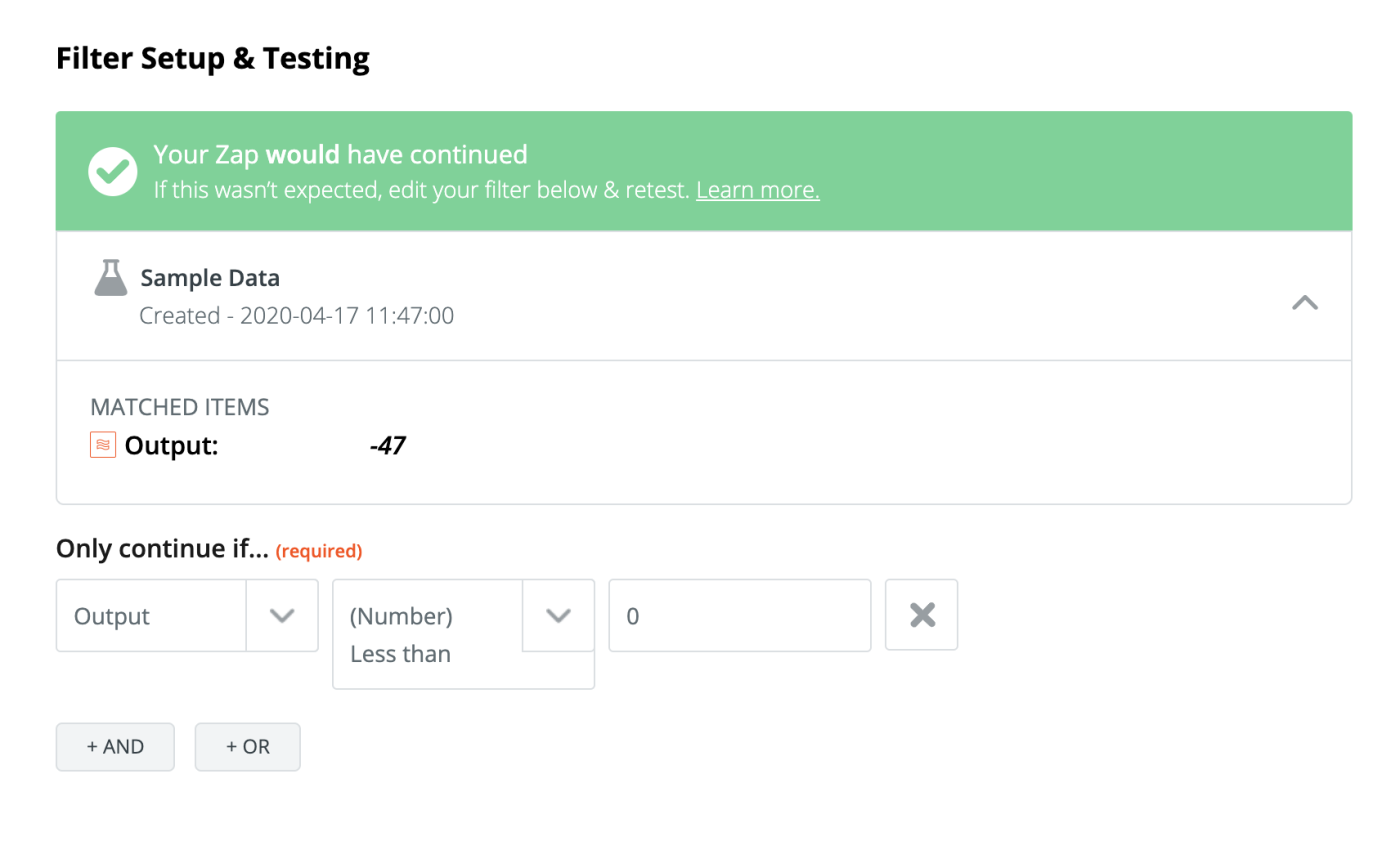
After the Filter, we can use Storage by Zapier's "Set Value" action to update "PersonalBest" with our new top score!
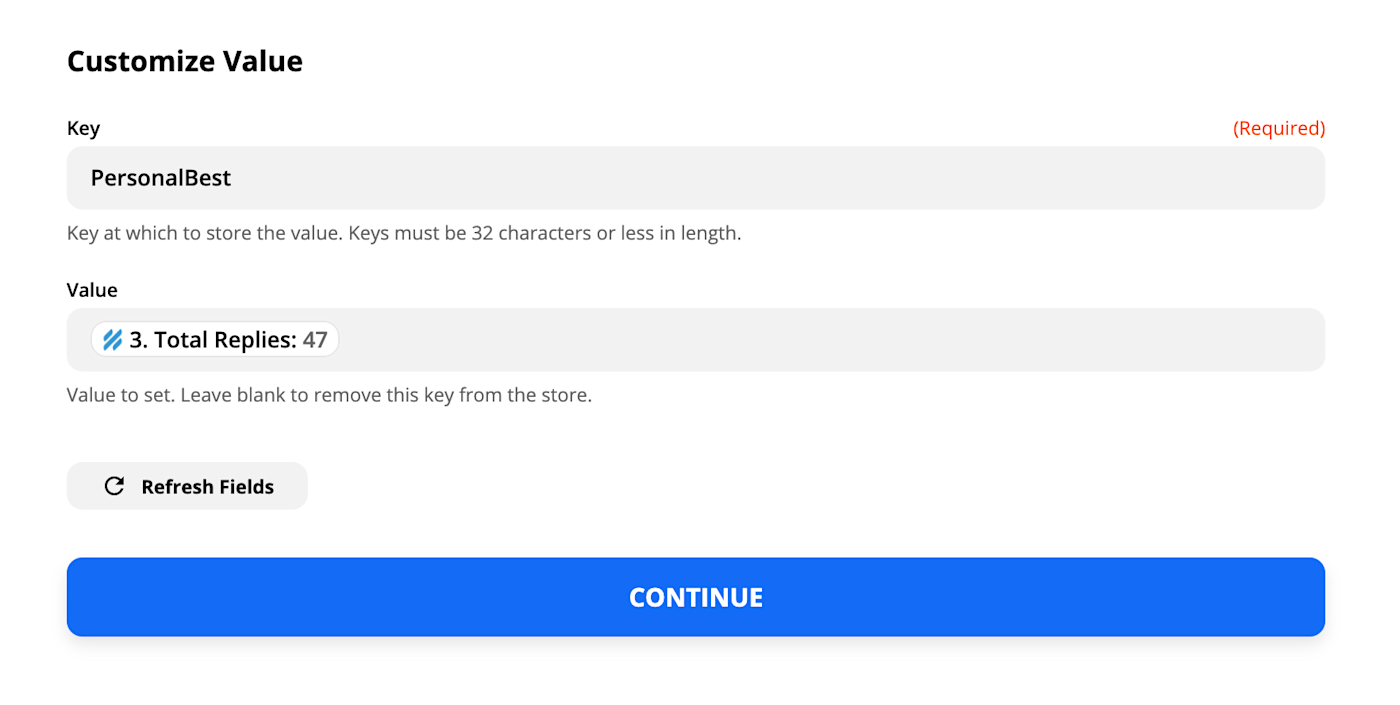
While we're at it, let's also send ourselves a congratulatory Slack message:

How to track metrics without a "Search" action
If your preferred app doesn't have a "Search" action that fits your needs, you can keep track of any metric you like with a separate Zap.
First, find a trigger for the thing you'd like to track. For example, let's say that I want to see how many times people are tagging @zapier on Twitter, so I start a new Zap with the "Search Mention" trigger.
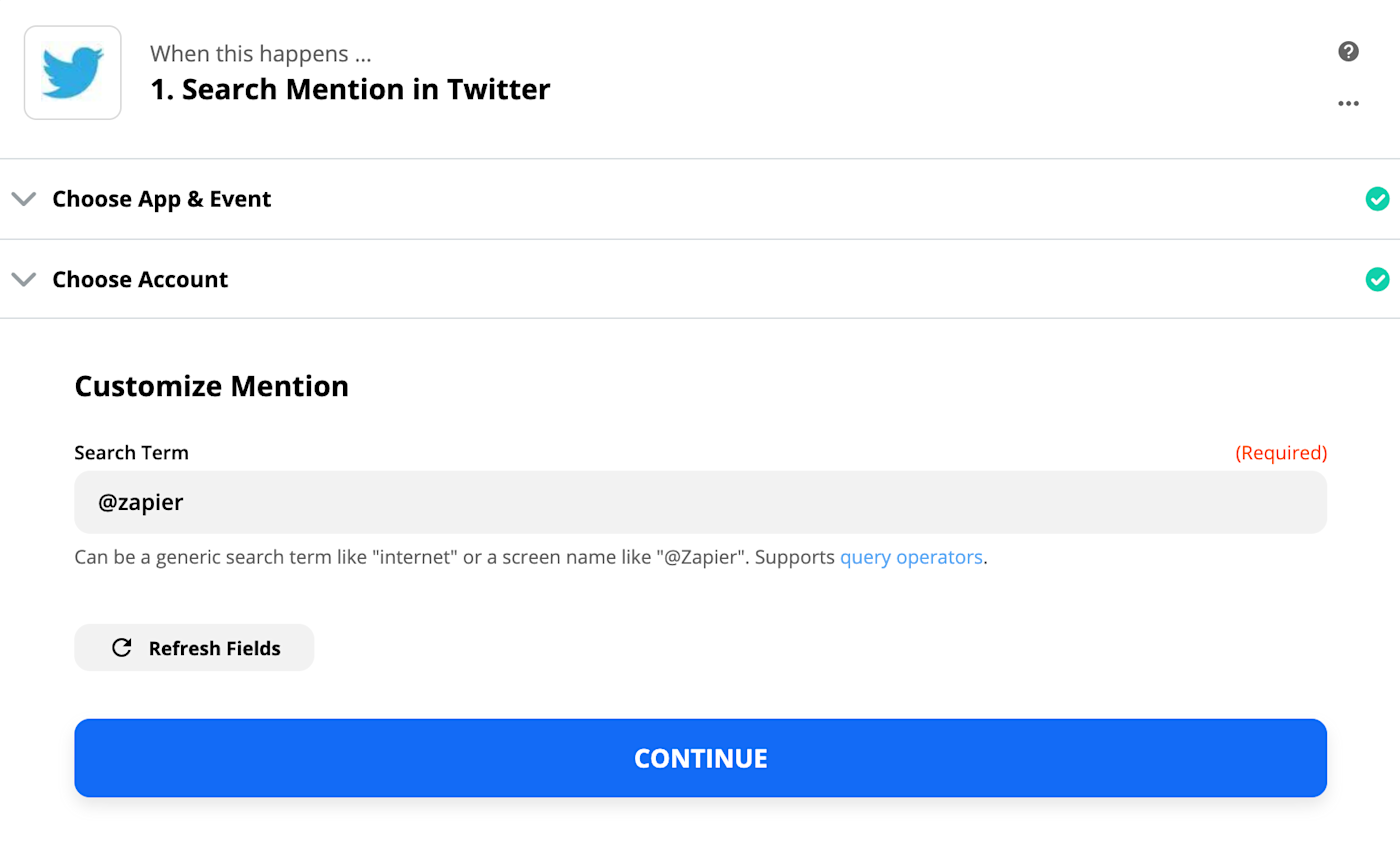
Then, using our old friend Storage, we can use the "Increment Value" action to add 1 to a number, let's call it "Mentions", each time that trigger runs:
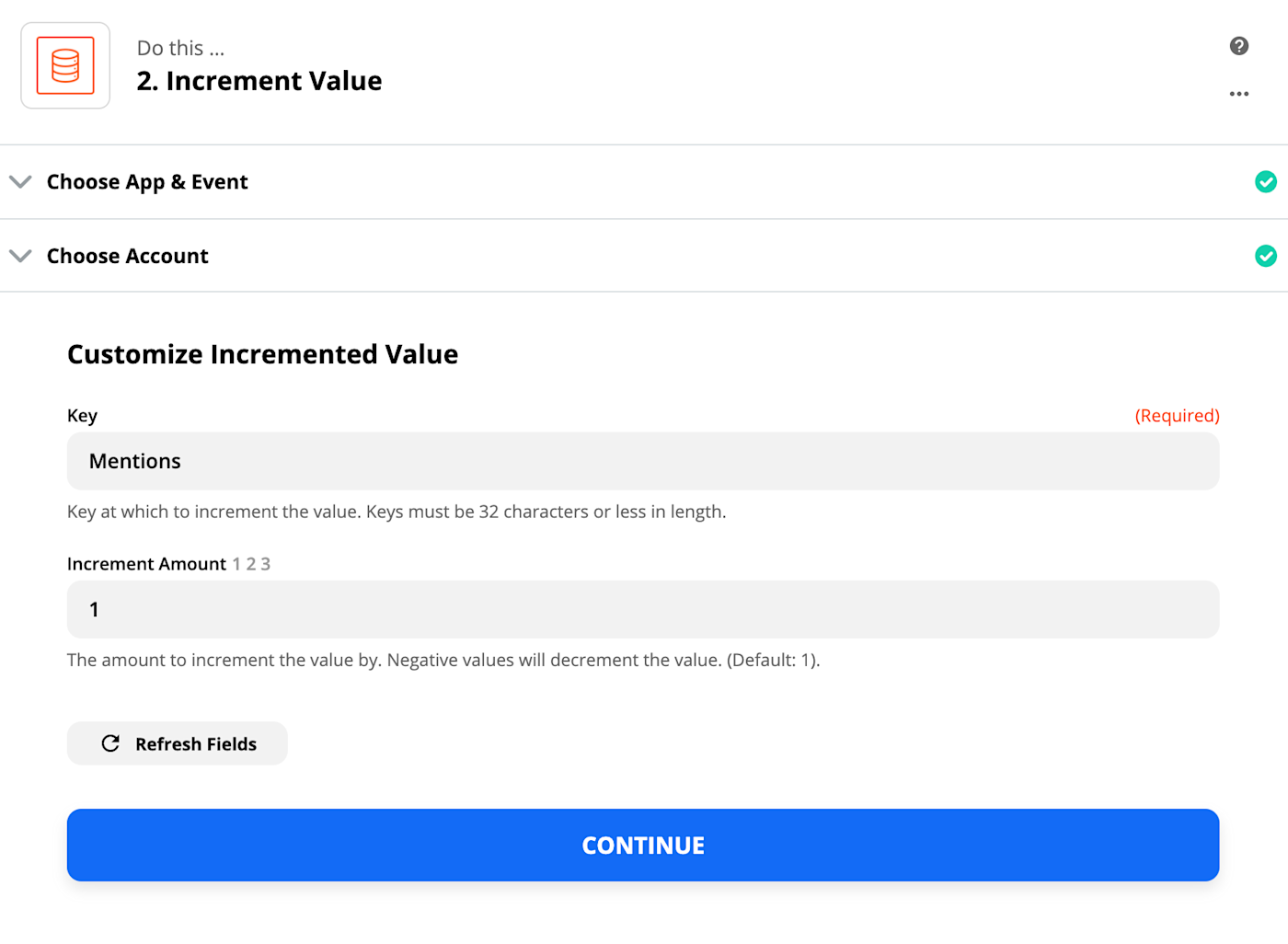
That way, the "Mentions" number reflects the number of new mentions we've received each day. In our "Personal Best Tracker" Zap, replace the "Search" action with "Get Value" to grab that value, so that you can see the previous day's number.
Remember to add a "Set Value" action to the end of the Zap to set "Mentions" back to 0 each day, so that you can compare performance daily!
Want to try it out? Here are two Zaps I've made to help track your own Twitter mentions each day:

